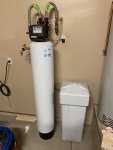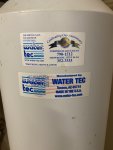I'm in Tucson, which has some of the hardest water in the country. I built my pool almost exactly 3 years ago. It's a salt water system. The water desperately needs to be changed as the hardness level is about 1400. I've also got a whole lot of white fluff that gathers on the bottom of the pool and drifts around that I'm guessing is calcium precipitating out of the water.
Some facts about my pool: It's pebbletek finish and it has a lot of native rocks around the edges that are actually in the water (not just above or on the water lines). It's a cartridge based filter system. So here are my questions:
Some facts about my pool: It's pebbletek finish and it has a lot of native rocks around the edges that are actually in the water (not just above or on the water lines). It's a cartridge based filter system. So here are my questions:
1. Is this white precipitate actually calcium?
2. What's the maximum saturation level of calcium in pool water? I'm guessing it's around 1400 or else I wouldn't get the precipitate. I've also noticed that when the pH gets a bit high, I get a lot more, so I'm guessing it varies by pH (?).
3. Why is my pool so hard already? I know people in town that don't change their pool water but once every 7 years or so and have never seen this precipitate. Is there something about a new pool that might cause a high calcium load right off the bat? Is there something about having native rocks **IN** the pool (and spillway) that's going to always cause me to have high calcium load?
Just an aside: I'm currently building a rainwater catchment system that should get the water off my roof into a cistern and eventually into the pool. I'm hoping this will help me keep the water longer than 3 years. Water is EXPENSIVE in the desert...


